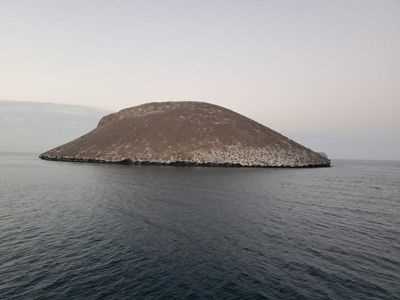Today we woke up along the northwest coast of Santa Cruz Island, in an area known as Dragon Hill. This place earned its interesting name in honor of the land iguanas that live along the coast of this arid zone. When we arrived at the rustic dock made of basaltic rocks, we noticed local vegetation covered by green leaves and flowers, announcing the middle of the rainy season. The opportunity to see this change of native vegetation only happens between December and May.
At the trail’s start, we spotted land iguanas near small burrows where female iguanas lay their eggs during mating season. The population of land iguanas in Cerro Dragon is one of the most affected by local invasive species, such as feral dogs, cats, and goats, and has been so for several decades. There are about 750 land iguanas in the area at this time, and Galapagos National Park rangers monitor the population stats periodically.
At the end of our visit, we observed some interesting endemic species that are part of this arid and coastal ecosystem hiding between the rocks and bushes. Sulfur butterflies and endemic locusts were flying around our travelers, showing their vivid and contrasting colors lining their wingspans.
We next visited Guy Fawkes Islet, where we donned our snorkeling gear. Colorful fish and sea stars were spotted in the shallow waters near the islet, and one of the biggest schools of black-striped salema fish crossed directly in front of us, offering the wonderful chance to take spectacular photos and swim alongside them.
We finished our day with Zodiac rides around Eden Islets, where our guests found marine birds and shore birds. These areas are declared nurseries for marine life, providing shelter and food during the local wildlife’s initial stages. We left the islet observing some juvenile blue-footed boobies resting on the eroded lava rocks.
Once back onboard National Geographic Endeavour II, we circumnavigated Daphne Major Islet enjoying the sunset set against the beauty of the geological features of the Galapagos Islands that appeared here a million years ago.







